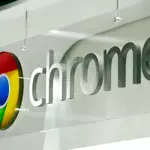Apple Dodges Trump’s Tariff Bullet — But Faces a Bigger Threat in AI
Introduction
Apple just scored a major win in President Donald Trump’s escalating tariff war with India. With smartphones exempt from the latest 25% tariff hike—bringing the total levies on Indian imports to 50%—CEO Tim Cook can breathe easier heading into the company’s crucial September iPhone launch.
But analysts say the real challenge for Apple isn’t tariffs—it’s artificial intelligence.
Tariffs: A Manageable Headache
Smartphones spared
The latest White House move could have been devastating. The iPhone—Apple’s biggest revenue driver—is largely assembled in India for the U.S. market. A 50% tariff would have hit hard. But exemptions for smartphones and U.S.-made components, such as semiconductors, mean Apple’s fall lineup avoids a direct cost surge.
The $1.1 billion pinch
Tim Cook still expects tariffs to cost Apple $1.1 billion this quarter. Yet Apple’s high margins, diversified supply chain, and Cook’s operational playbook give the company room to maneuver. Over the last five years, production has expanded in India and Vietnam to reduce reliance on China.
$100 billion investment sweetens the deal
On the same day tariffs were announced, Apple pledged an additional $100 billion to build iPhone components in the U.S.—on top of its long-standing domestic investments. While not changing tariff policy, the move aligns Apple with Trump’s push for more American manufacturing.
A moving target
Even with this exemption, shifting tariff policies throughout the year have created unpredictability. Analysts warn that India and China remain Apple’s only large-scale options for U.S.-bound iPhones, and swapping production between regions isn’t as simple as it sounds due to differing hardware specs like SIM slot removal and millimeter-wave 5G.
AI: The Real Hurdle Ahead
Lagging behind rivals
Apple’s AI strategy has been under scrutiny all year. A planned Siri overhaul—designed to deliver more personalized, cross-app capabilities—missed its launch window, leaving Apple behind Google, OpenAI, and others in the digital assistant race. Google even poked fun at the delay in a Pixel 10 ad.
Competitors surge
While Apple’s AI rollout faltered, Microsoft, Nvidia, and Meta have leveraged their cloud, chip, and AI model businesses to seize market share—and market value. Nvidia and Microsoft each hit $4 trillion in July, a milestone once expected of Apple.
Apple’s AI push
Cook insists AI is “one of the most profound technologies of our lifetime” and says Apple is embedding it deeply across devices and platforms while ramping up investment. But the iPhone’s AI capabilities must evolve quickly to keep pace, especially as Samsung, Google, and Qualcomm advance their own offerings.
Investor Focus: Post-iPhone 17 Strategy
Analysts agree: tariffs are a 2025 story, but AI is Apple’s decade-defining challenge. Future investor confidence hinges on whether Apple can turn AI into a competitive advantage.
As Baird’s Ted Mortonson puts it:
“What’s more important with investors is, after the iPhone 17, what do they really do? As far as generative AI and AI functionality, that’s the real focus on Apple right now.”
Bottom Line
Apple’s supply chain resilience and political agility allowed it to sidestep the immediate sting of Trump’s tariff escalation. But in the race for AI dominance, delays and missed launches risk giving rivals the edge. For Apple, the question isn’t whether it can survive tariffs—it’s whether it can lead in the next wave of intelligent devices.

 Previous Post
Previous Post Next Post
Next Post